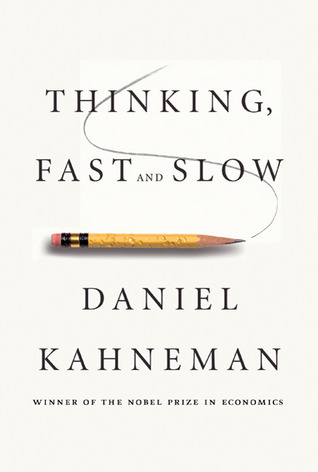This book stands up to its fame. It’s chock-full of precious insights on our decision-making and behavioral processes and how and why we humans are often capable of making informed yet awful decisions. The bad news is that we can hardly avoid most of these biases, no matter how hard we try and even if we know about them. So-called experts in the field are subject to these same biases: their short-term estimates and predictions can even be pretty good, but they will fail miserably in the long term, like any other man or woman. There are so many interesting tidbits in this text that it’s overwhelming. Some, if not most of them, may even fall in the ordinary sense category, but the added value here is we are being told why they fall in that class. Because I came to reading it so late (it was published in 2011), this book might be the main reason why some of these concepts are now common sense.
 The text is too long, though. It’s almost 700 pages, and I suspect they could
have been half of that without sacrificing content. Kahneman won the Nobel
Prize for his behavioral finance and hedonic psychology research. He spent
a career researching these topics, and most of the biases and behaviors
mentioned in the text are his discoveries (with colleagues.) He tries hard to
be popular and mostly succeeds, especially in the first, second and third
parts, where the juiciest ah-ha moments await the reader. The rest is more
about his prospect theory and behavioral finance; it probably holds the most
relevant conclusions for an informed audience but suffers from repetitions and
perhaps too many examples, riddles and tests.
The text is too long, though. It’s almost 700 pages, and I suspect they could
have been half of that without sacrificing content. Kahneman won the Nobel
Prize for his behavioral finance and hedonic psychology research. He spent
a career researching these topics, and most of the biases and behaviors
mentioned in the text are his discoveries (with colleagues.) He tries hard to
be popular and mostly succeeds, especially in the first, second and third
parts, where the juiciest ah-ha moments await the reader. The rest is more
about his prospect theory and behavioral finance; it probably holds the most
relevant conclusions for an informed audience but suffers from repetitions and
perhaps too many examples, riddles and tests.
By pure coincidence, just the other day, 3 Quarks Daily posted a 2011 Google Talk in which Kahneman was invited to talk about Thinking Fast and Slow. I found it very good at explaining, let’s say, the first part of the book (System 1 and System 2, their interactions and their influence on everyday human behavior.) Examples and stories mentioned are from the book. My suggestion is first to watch the speech. It’s 45 minutes well spent, then decide if you want to invest in the book.